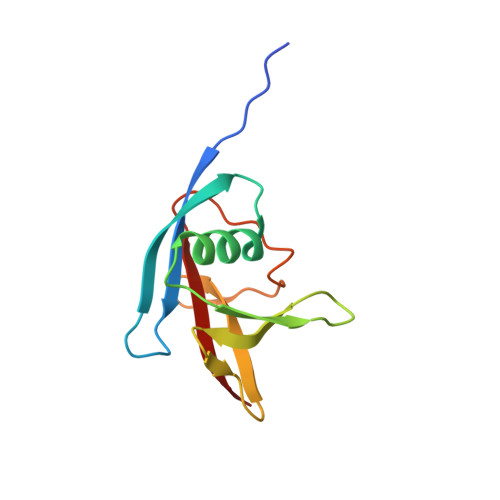Structure of the human transcobalamin beta domain in four distinct states.
Bloch, J.S., Ruetz, M., Krautler, B., Locher, K.P.(2017) PLoS One 12: e0184932-e0184932
- PubMed: 28910388
- DOI: https://doi.org/10.1371/journal.pone.0184932
- Primary Citation of Related Structures:
5NO0, 5NP4, 5NRP, 5NSA - PubMed Abstract:
Vitamin B12 (cyanocobalamin, CNCbl) is an essential cofactor-precursor for two biochemical reactions in humans. When ingested, cobalamins (Cbl) are transported via a multistep transport system into the bloodstream, where the soluble protein transcobalamin (TC) binds Cbl and the complex is taken up into the cells via receptor mediated endocytosis. Crystal structures of TC in complex with CNCbl have been solved previously. However, the initial steps of holo-TC assembly have remained elusive. Here, we present four crystal structures of the beta domain of human TC (TC-beta) in different substrate-bound states. These include the apo and CNCbl-bound states, providing insight into the early steps of holo-TC assembly. We found that in vitro assembly of TC-alpha and TC-beta to a complex was Cbl-dependent. We also determined the structure of TC-beta in complex with cobinamide (Cbi), an alternative substrate, shedding light on the specificity of TC. We finally determined the structure of TC-beta in complex with an inhibitory antivitamin B12 (anti-B12). We used this structure to model the binding of anti-B12 into full-length holo-TC and could rule out that the inhibitory function of anti-B12 was based on an inability to form a functional complex with TC.
Organizational Affiliation:
Department of Biology, Institute of Molecular Biology and Biophysics, ETH Zurich, Zurich, Switzerland.















